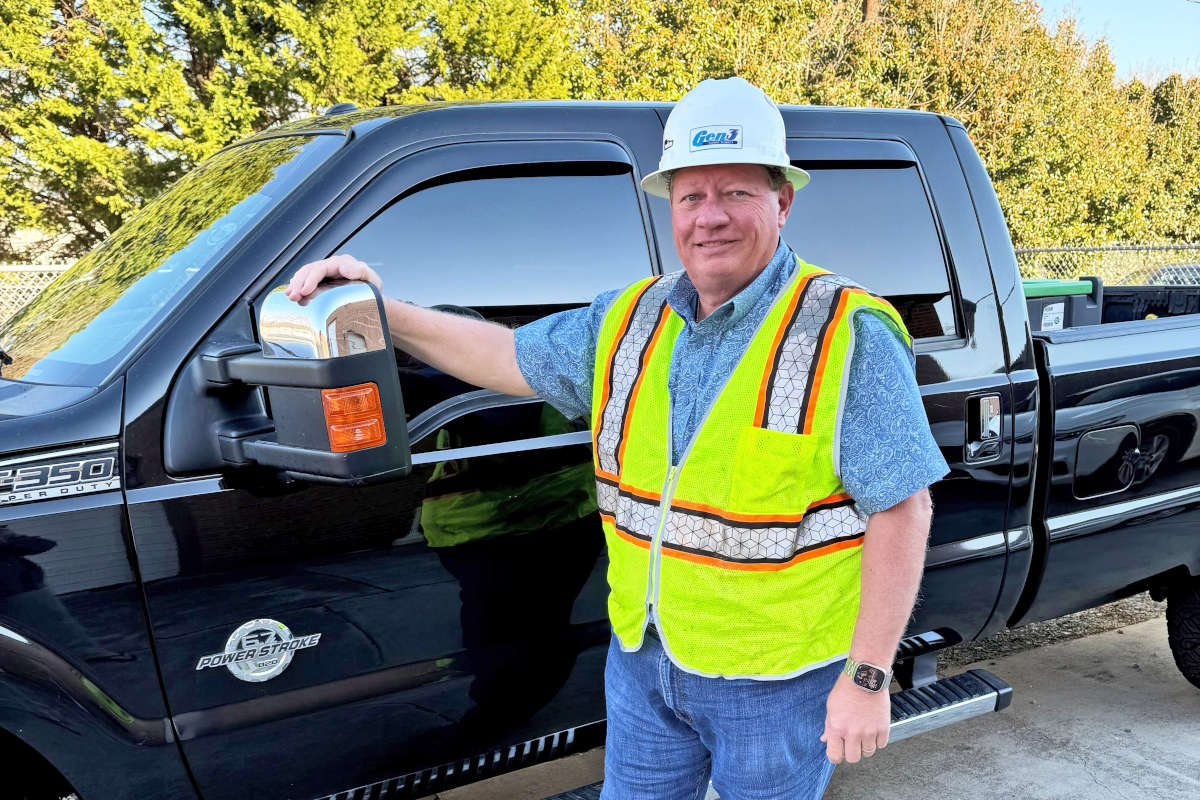
Electric Project Highlights the Benefits of Using Auger Boring to Cross Railways
BOND Trenchless recently had the opportunity to work with Asplundh Construction to upgrade a 35kV electrical transmission system in New York by installing cable and conduit from a nearby substation to a riser pole for a local utility company.
For its portion of the project BOND Trenchless was contracted to complete a jack-and-bore beneath an active passenger railroad. The bore in question involved installing a 24-in. steel casing with a bundle of one 4-in. and three 6-in. HDPE conduits 79-ft beneath the railroad. BOND Trenchless completed the bore installation, steel casing welding, HDPE conduit fusion, HDPE conduit installation, and annulus grouting.
The initial challenge to overcome on this crossing were the workspace constraints. Luckily, the launch workspace was in substation property, making pit excavation and boring operations a simple affair. The receiving workspace was in a roadway near a business and the passenger railroad platform. Access to both the business and stairway to the platform had to be maintained at all times. Construction fencing restricting access to the bore pit and signage was utilized to ensure the safety of civilians around the active work area. Fortunately for BOND, the tight area being the receiving workspace worked in our favor as the necessary workspace is minimal in comparison to the launch side.
When passing beneath railroads, it is not uncommon for certain restrictions to be put in place on the contractor. The three common restrictions encountered by the BOND Trenchless jack-and-bore division are the requirement of 24-hour operations when beneath the railroad zone of influence, halting operations when a train is actively passing and having the bore be perpendicular to the tracks. These requirements are among the primary factors considered during the planning phase of the project so the overtime, or downtime, can be factored into the operation plan.
Originally, the crossing required using a 24-in. fiber glass reinforced polymer mortar casing pipe. During procurement, BOND Trenchless recommended using 24-in. steel casing due to its readily available nature.
Typically, a non-metallic casing pipe is preferred to house the conduits for electrical transmission related installations as it does not impact the ampacity of the cables to the extent that steel casing does. In this case, there were no ampacity requirements for this installation, therefore steel casing could be utilized, which accelerated the procurement process.
Beyond a longer lead time on procurement, to install a non-steel pipe a slick bore would need to be completed, adding additional time to the project.
Slick-boring is an installation methodology consisting of two phases, bore pipe installation and product pipe installation. First, a conventional auger bore would be completed to install a casing, typically steel, with an outer diameter identical to the product pipe. After the casing is installed, the product pipe follows directly behind the casing pipe and is pushed across one joint at a time while the casing is removed as it exits into the receiving pit. The product pipe is typically either thrusted or rammed across behind the steel casing. The slick boring process limits the stresses imposed upon the product pipe.
The geotechnical conditions consisted primarily of medium dense to dense silty sand with trace gravel. At the bore depth, gravel content was low, in the 5 to 10 percent range. Approximately 5 ft above the bore depth, gravel content was as high as 60 percent.
Knowing this, the BOND Trenchless boring crew lead by superintendent Drew Fisk, took great care while establishing the bore hole. Depending on the size of the gravel, progress can be slowed significantly as the crew may have to pull the auger from the casing to clear any larger rocks by hand. Finally, there is potential for the casing to be forced upwards as gravel and rocks get lodged beneath the leading edge of the casing.
To complete the crossing, BOND Trenchless used its American Augers 36-600 boring machine. After establishing the borehole, the BOND Trenchless crew was able to complete the casing installation in just over one shift. After completing boring and welding operations without incident, the BOND Trenchless crew prepared for the conduit bundle installation by removing all boring equipment from the pits.
The bundle of four conduits was fused and banded into casing spacers before being pulled into the steel casing. The spacers ensured the conduits were spaced per project specifications and included wheels to ease the conduit installation process. The final requirement to complete the installation was to grout the annulus inside the steel casing with thermal grout.
To complete this final phase of the project, BOND Trenchless used a grout pump to pump the thermal grout into the annulus between the steel casing and electrical conduits. The thermal grout will help dissipate the heat generated by the electrical cables and act as a barrier between the conduits, cables and steel casing.
In the multitudes of challenging, complicated, or unique projects that the BOND Trenchless team undertake regularly, it’s always welcome for a straightforward project to come through our doors and go off without a hitch.
Cole Byington, P.E., is an HDD engineer-trenchless at BOND Civil & Utility Construction Inc.




